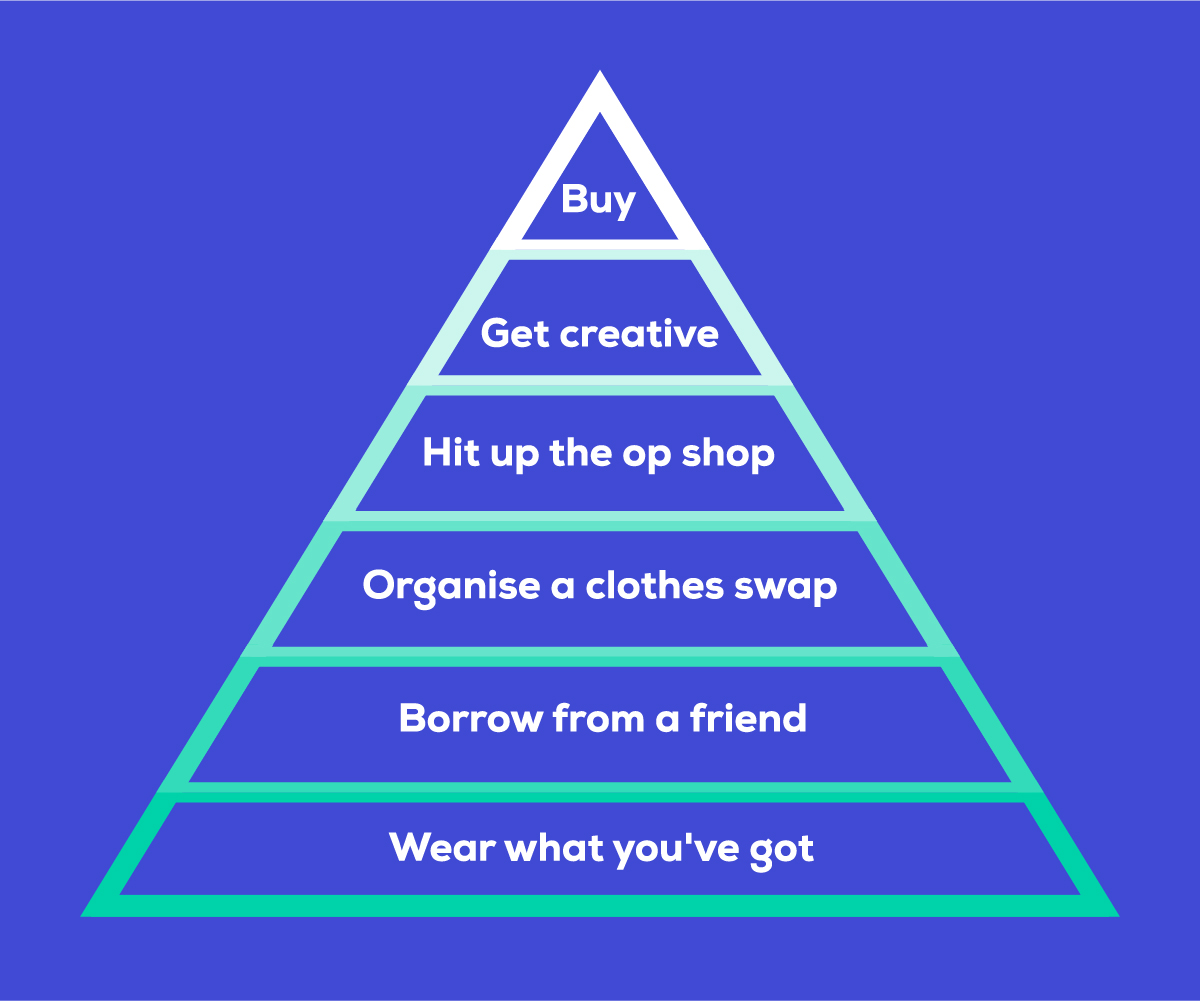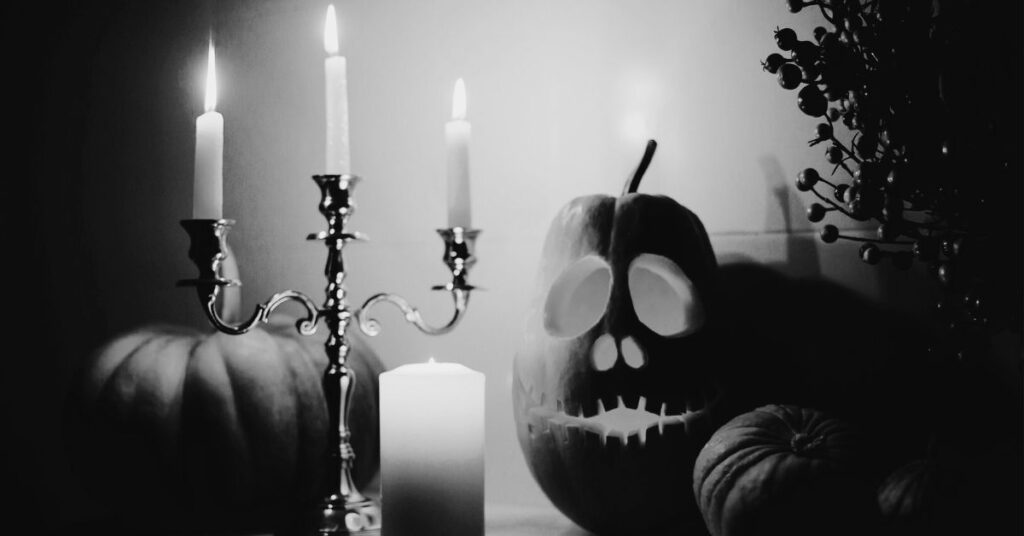The pumpkins and fake cobwebs are out, the lolly shelves are stocked, and conversations about costumes are in full force. Despite being celebrated by the masses in America, the Halloween fever is slowly starting to creep its way across the ocean to Australia.
With more of us than ever donning our best costumes and consuming our weight in candy, it’s important to take a step back to consider the origins of this holiday as well as some of the concerns that have arisen from the now-modernised holiday.
If you’re not sure where this eerie holiday came from, you’re in for a treat! Read on to find out more.
Let’s go back to the start
Halloween usually generates images of autumn leaves, pumpkin carvings and kids in costumes running through the streets on the last day of October. Essentially, what we think of is a very American view of a holiday that isn’t actually American at all.
Celebrated on October 31 each year, Halloween originates from the ancient Celtic festival of Samhain. During Samhain (a Gaelic word pronounced “sow-win”), people would light bonfires and wear costumes to ward off ghosts as they celebrated the end of the harvest and ushered in the ‘dark part of the year’.
So was the name change some kind of trick?
Not exactly!
As Christianity gained popularity in pagan communities, church leaders attempted to reframe Samhain as a Christian celebration. In the eighth century, Pope Gregory III designated November 1 as a time to honour all saints. As you can imagine, All Saints Day started to incorporate some Samhain traditions, with the evening before officially being dubbed as ‘All Hallows Eve’ and, later, Halloween.
Isn’t Halloween an American holiday?
So if Samhain was all about celebrating the end of the harvest, why do we dress up and ask our neighbours for candy?
Great question!
Here are some of your favourite Halloween traditions and a small insight into where they originated from.
Dressing up
During Halloween, it’s common to see 25 kids in Spiderman costumes running around and some teenagers who have put on a mask in a half-arsed attempt to get some free candy. But where did the dressing-up aspect of Halloween come from?
Going back to ancient times, the Celts believed the barrier between worlds was breachable during Samhain and that their ancestors were expected to cross over during this time. As such, they would dress as animals and monsters so the fairies were not tempted to kidnap them.
If you’re still scratching your head as to the last time you saw a truly scary costume on Halloween (because let’s face it, the only scary thing about a kid dressed up as Elsa is when they start singing ‘Let It Go’ for the 32nd time in one night), there is also a reason for this. In the late 1800s, there was a shift in America to shape Halloween into a more ‘community-friendly’ event rather than one of ghosts, pranks and witchcraft. Parents especially were encouraged by newspapers and community leaders to take anything ‘scary’ or ‘grotesque’ out of the celebrations.
Trick or treating
What goes hand in hand with dressing up? Trick or treating! While we’ve covered the dressing up aspect of trick or treating, it’s time to look into the door-knocking, candy-eating side.
While its origins are murky, trick or treating dates back to ancient Irish and Scottish traditions in the nights leading up to Samhain. In Ireland, ‘mumming’ was the practice of putting on costumes, going door-to-door and singing songs to the dead. Cakes were given as payment.
Halloween pranks also have a tradition in Samhain, though in the ancient celebration, tricks were typically blamed on fairies.
The Americanised tradition of trick or treating was derived from the All Souls’ Day parade in England. During these parades, the poor would beg for food, and families would give them pastries called “soul cakes” in return for their promise to pray for the family’s dead relatives.
This distribution was eventually taken up by children visiting houses in the neighbourhood and has grown into what it is today.
Pumpkin carvings
While pumpkin carvings are a more common practice today in America than in Australia, this tradition – again – dates back to ancient times. Creating a ‘jack-o’-lantern’ was an Irish tradition whereby large turnips and potatoes were the original vegetable of choice and were created to keep away ‘Stingy Jack’ – an old Irish folktale.
Immigrants brought the tradition of the jack-o’-lantern with them when they moved to the United States but found that a pumpkin was the perfect substitute instead.
Halloween in Australia
Here in Australia, we don’t celebrate like our friends across the equator do. While they sip on spiced pumpkin lattes, we’re often sneezing into our hankies and enjoying the warmer weather.
However, there are still a lot of Aussies who love getting into the Halloween spirit! Businesses and individuals often love playing into these themes – whether it’s a social media post or decorating their house. But are all these traditions as harmless as we think?
Before you fill the lolly jar and schedule your socials, here are some things to consider on Halloween.
Inclusivity
From a very high level, Halloween looks inclusive to everyone – eating lollies, dressing up, what’s not to like?! But there are a few things of importance that individuals and businesses can keep in mind to ensure Halloween factors in everyone.
Language
Words make up everything we do – from the conversations we have to the captions we write on social media. One word that seems to crop up a lot – particularly on Halloween – is the word ‘spooky’ and all variations (spook, spooked). Although this word is used often, not many of us know its origins.
The word ‘spook’ originates from the Dutch word for apparition or spectre. It wasn’t until World War II that it began to refer to black people. The black Army pilots who trained at the Tuskegee Institute were referred to as the “Spookwaffe” — waffe being the German word for weapon or gun. Once this word was linked to blackness, it didn’t take long to become a recognisable slur.
Whether you’re telling a scary story to your friends or curating social media content for your business, steering away from this word and its variants will allow for more inclusivity.
Not sure what to use instead? Here is a list of alternatives:
- Scary
- Creepy
- Eerie
- Ghostly
- Mysterious
- Ominous
- Supernatural
- Weird
- Spine-chilling
The main event
Inclusivity isn’t just about the words we use, but our actions too. When it comes to your Halloween celebrations this year, some things you might want to consider to assist with inclusivity include:
- Having alternative treat options for those with dietary requirements (e.g. gluten-free and vegan options).
- Consider your costume. A hashtag, #notyourcostume, with almost 2.5k posts on Instagram, has circulated regarding costumes and cultural appropriation.
- Many children struggle with sensory sensitivities. Some may be overwhelmed with the act of trick or treating – especially with the fake decorations. Whether it’s your child or one that has knocked on your door, consider not everyone expresses themself the same.
- If trick or treating is too much for your child, consider other Halloween activities they might like, such as a movie marathon, arts and crafts or swapping candy with a small group of friends.
Sustainability
Despite its impact in America, Halloween is increasingly growing in popularity in Australia. According to the Australian Retail Association (ARA), more than 5.3 million Aussies will celebrate Halloween this year, with spending forecasted to reach $490 million. This is up 14% (or $60 million) on Halloween in 2022.
While Halloween celebrations can really bring people together, there are some environmental factors to consider when shopping for your sweets this year.
The tricks
Part of the excitement of Halloween – regardless of age – is finding a costume to dress up in. Unfortunately, not all costumes are good for the environment with many being worn once before being discarded or taken to the op shop. This Halloween, before buying a brand new costume to bust out, consider what you have. One thing to keep in mind is Sarah Lazorovic’s ‘Buyerarchy of Needs’.
The same thing applies to your decorations. Instead of heading into your local Kmart when the Halloween decorations hit the shelf (literally in like July), see what you can source or make first. There are plenty of arts and crafts sites online that provide options for sustainable, eco-friendly things to make and do on Halloween.

Image: Recreated from Sarah Lazorovic
The treats
With 45% of survey respondents in the ARA survey stating they will be trick or treating and 39% stocking up on lollies and chocolate, it’s safe to assume that plenty of chocolate and lollies will be purchased. While eating our body weight in chocolate is something I’m sure we’re all guilty of, candy wrappers and excess consumption aren’t great for our planet.
The palm oil found in a lot of our favourite treats is part of a much bigger ecological crisis going on. The problem isn’t necessarily the palm oil but the farming of the product itself, with palm oil production responsible for about 8% of the world’s deforestation from 1980 to 2008.
This Halloween, instead of buying as many lollies as your trolley will fit, consider checking the ingredients list and buying products that are palm oil free and are in recyclable packaging.
While Halloween isn’t as big in Australia as it is in America, it’s certainly growing in popularity! Whether you’re trick or treating with the family or creating a Halloween offering at work, consider the origins of the holiday and everything that comes with it, from inclusive language and practices to sustainability within your costumes and candy.
Got a sustainable Halloween tip? We’d love to hear it! Send us a DM on Instagram – @oracoagency.

